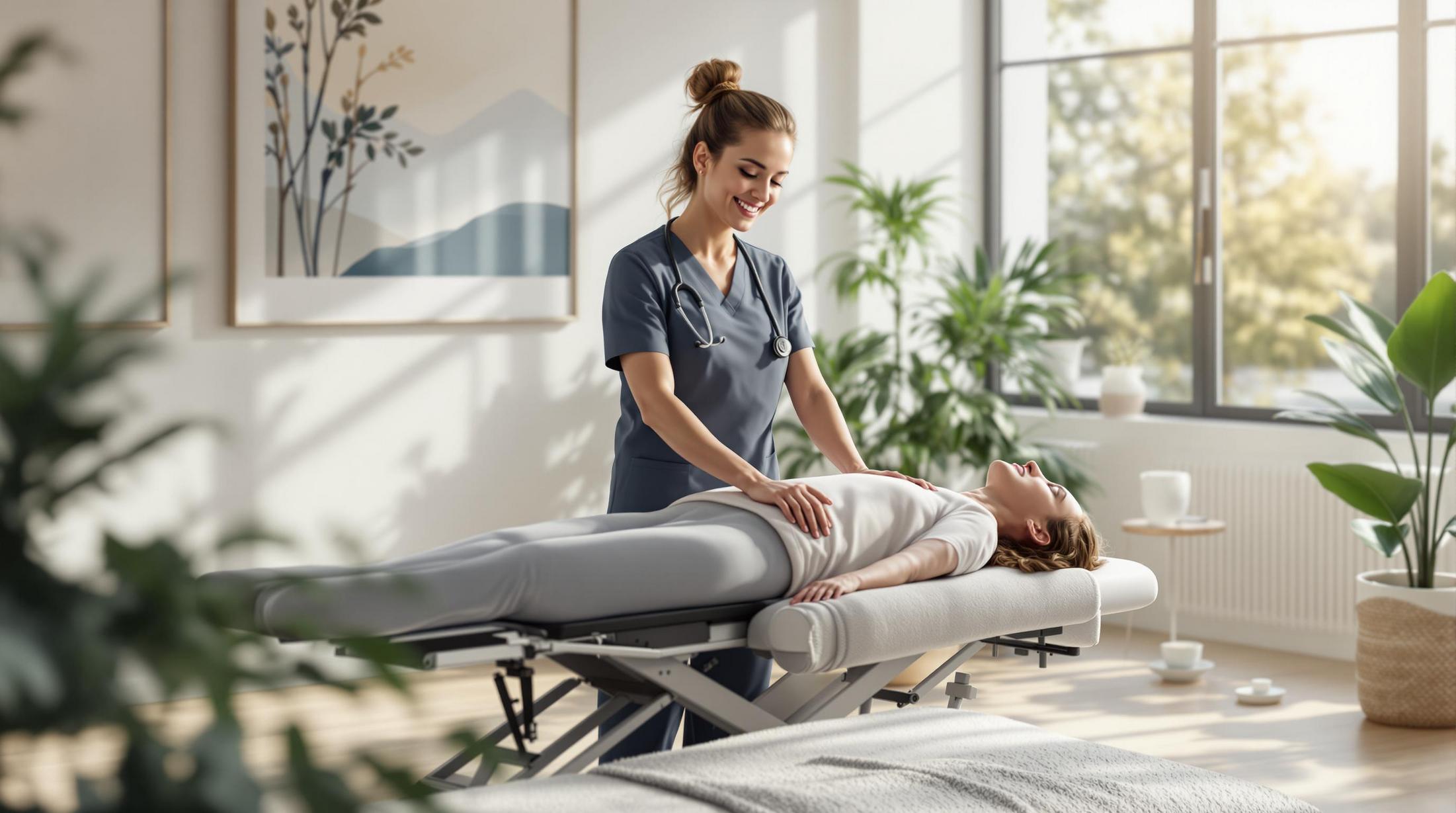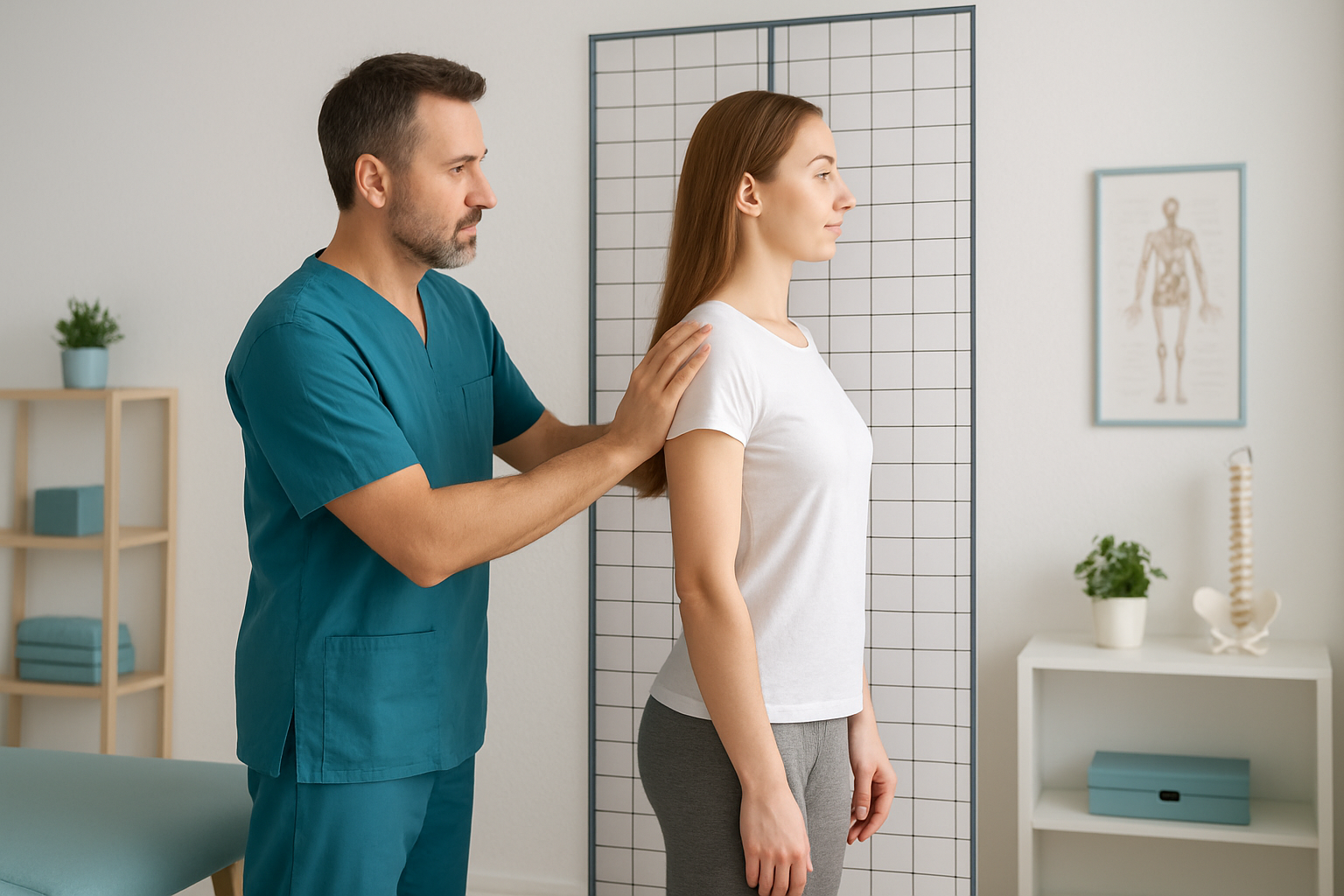We already know too much screen time can strain the eyes and tighten the neck—but what if it’s also dragging down your mood?
Emerging research is connecting tech neck—the posture we adopt when staring down at phones, laptops, and tablets—with more than just physical discomfort. It turns out that this forward head position doesn’t just affect your spine; it impacts your emotional state, energy levels, and even your self-esteem.
This article breaks down what science says about the posture-psychology connection—and why correcting tech neck could be one of the most powerful things you do for your mental wellness.
Jump To:
TLDR – Quick Guide
- Tech neck refers to the forward head posture caused by prolonged screen use.
- This posture compresses the spine, strains muscles, and reduces oxygen flow.
- Research links poor posture with increased feelings of stress, anxiety, and low confidence.
- Upright posture supports better breathing, improved mood, and reduced fatigue.
- Structural correction and lifestyle changes can reverse tech neck and its mental health impact
What Is Tech Neck?
Tech neck is the term for the hunched, forward-leaning position many people adopt while using screens. It often includes:
- Forward head posture
- Rounded shoulders
- Tight neck and chest muscles
- Compressed upper spine
The average human head weighs about 10–12 pounds. But tilt it forward just 15 degrees and it puts 27 pounds of pressure on your neck. At 45 degrees? That’s nearly 50 pounds.
This unnatural load causes chronic tension, headaches, reduced mobility, and long-term spinal misalignment.
The Science Behind Posture and Mood
Posture isn’t just a physical state—it directly influences how you feel. Here’s what studies are revealing:
- Increased Cortisol Levels: Slouched or forward-leaning posture is linked to higher stress hormone levels.
- Decreased Serotonin and Testosterone: Power postures (upright, open) are associated with confidence-boosting neurotransmitters, while collapsed posture has the opposite effect.
- Reduced Oxygen Intake: Forward posture compresses the lungs and diaphragm, limiting oxygen flow—which can contribute to fatigue and brain fog.
- Mood Impacts: Multiple studies show that people in slouched positions report more feelings of sadness, stress, and irritability compared to those in upright positions.
Signs You Have Tech Neck
- Frequent headaches or eye strain
- Tightness or pain in the upper back, shoulders, or neck
- Forward head posture (ears sit in front of your shoulders)
- A “hump” forming at the base of your neck
- Fatigue and low mood after long hours at your desk or phone
How to Break the Cycle
- Start with Awareness
Recognize when you’re looking down for extended periods. Use posture check reminders or apps that alert you to slouching. - Adjust Your Workstation
Raise your screens to eye level. Use a laptop stand, external monitor, or ergonomic chair setup to reduce downward gaze. - Incorporate Movement Breaks
Stretch every 30–60 minutes. Focus on neck rolls, chest openers, and spinal extensions to combat tech neck posture. - Postural Correction with ABC™
Advanced BioStructural Correction™ goes beyond temporary relief. It corrects structural misalignments caused by years of tech neck and restores your body’s natural upright posture—helping both physical and emotional well-being. - Practice Power Posture Daily
Stand or sit tall, open your chest, and breathe deeply. This immediately reduces stress and boosts confidence.
Key Takeaways
- Tech neck causes more than physical strain—it’s linked to poor mood and mental fatigue.
- Forward posture affects hormone levels, breathing, and emotional resilience.
- Correcting your posture improves both physical comfort and psychological health.
- ABC™ treatment offers a long-term solution to structural issues caused by tech neck.
- Upright posture isn’t just good for your spine—it’s a mental health strategy.
FAQs
1. Can tech neck really affect my mood?
Yes. Research shows that poor posture can increase stress, anxiety, and feelings of depression by influencing hormone levels and oxygen intake.
2. Is tech neck reversible?
Absolutely. With consistent treatment and awareness, you can realign your posture and undo years of damage. ABC™ is particularly effective for this.
3. How long does it take to fix tech neck?
It depends on the severity, but most people see noticeable improvement within weeks of consistent structural correction and daily habit changes.
4. Can improving posture boost confidence?
Yes. Upright posture has been shown to increase testosterone, reduce cortisol, and improve self-perception—resulting in greater confidence and energy.
5. What’s the best sitting posture to avoid tech neck?
Sit with your head aligned over your shoulders, feet flat on the floor, and screens at eye level. Use support under your arms to reduce shoulder tension.






